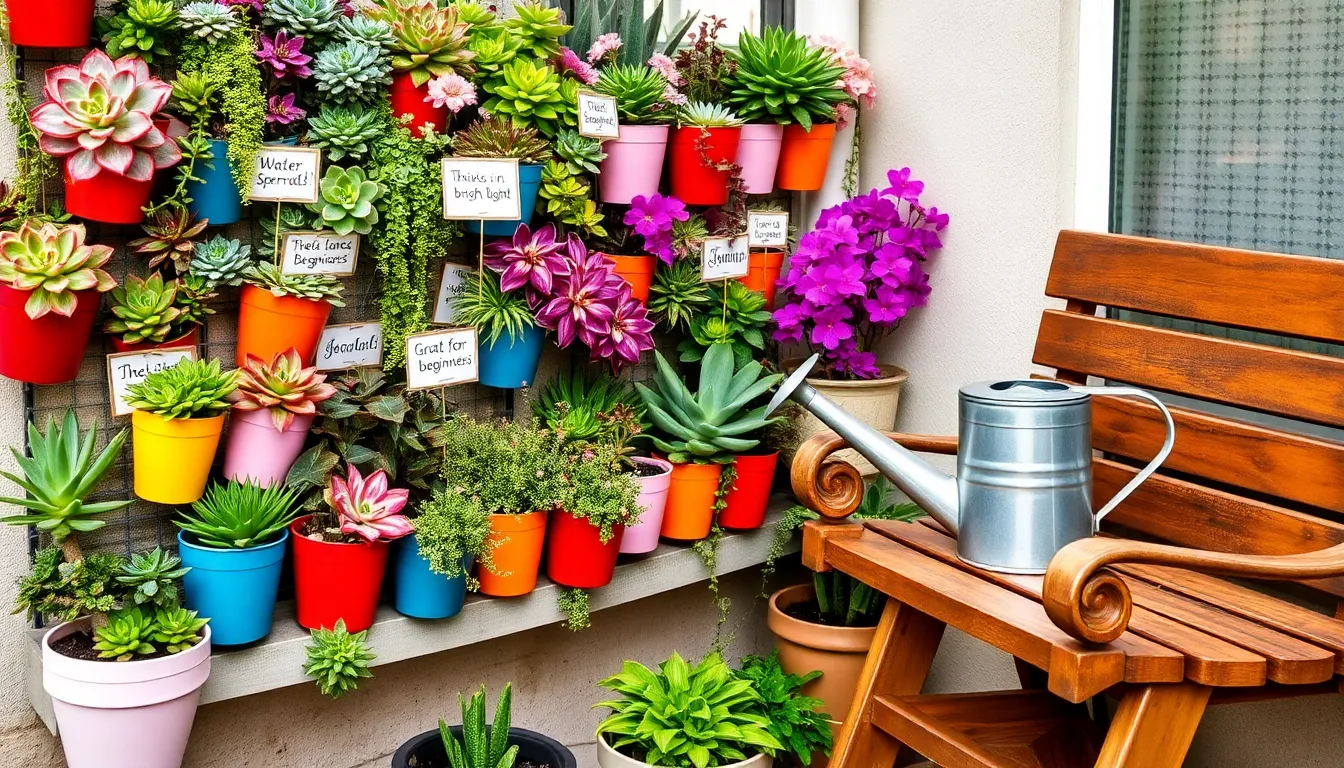In the hustle and bustle of modern life, finding time to tend a garden might seem like a luxury reserved for those with ample free time. But whether you’re a novice just discovering the thrill of planting your first seedling, or a seasoned gardener looking for ways to streamline your routine, “Gardening Tips for Busy People” is here to transform your garden into a sanctuary you can enjoy without the stress of time constraints.
This guide is packed with innovative design ideas that cater to both your schedule and your green thumb, highlighting efficient techniques and low-maintenance plants that deliver maximum beauty with minimal effort. By embracing these strategies, you’ll not only cultivate a garden that thrives but also experience the joy and satisfaction that comes from nurturing nature—even on a tight schedule. With our expert tips, you’ll confidently cultivate a flourishing garden that brings you peace and accomplishment, all while balancing the demands of daily life.
Choose Low-Maintenance Plant Varieties
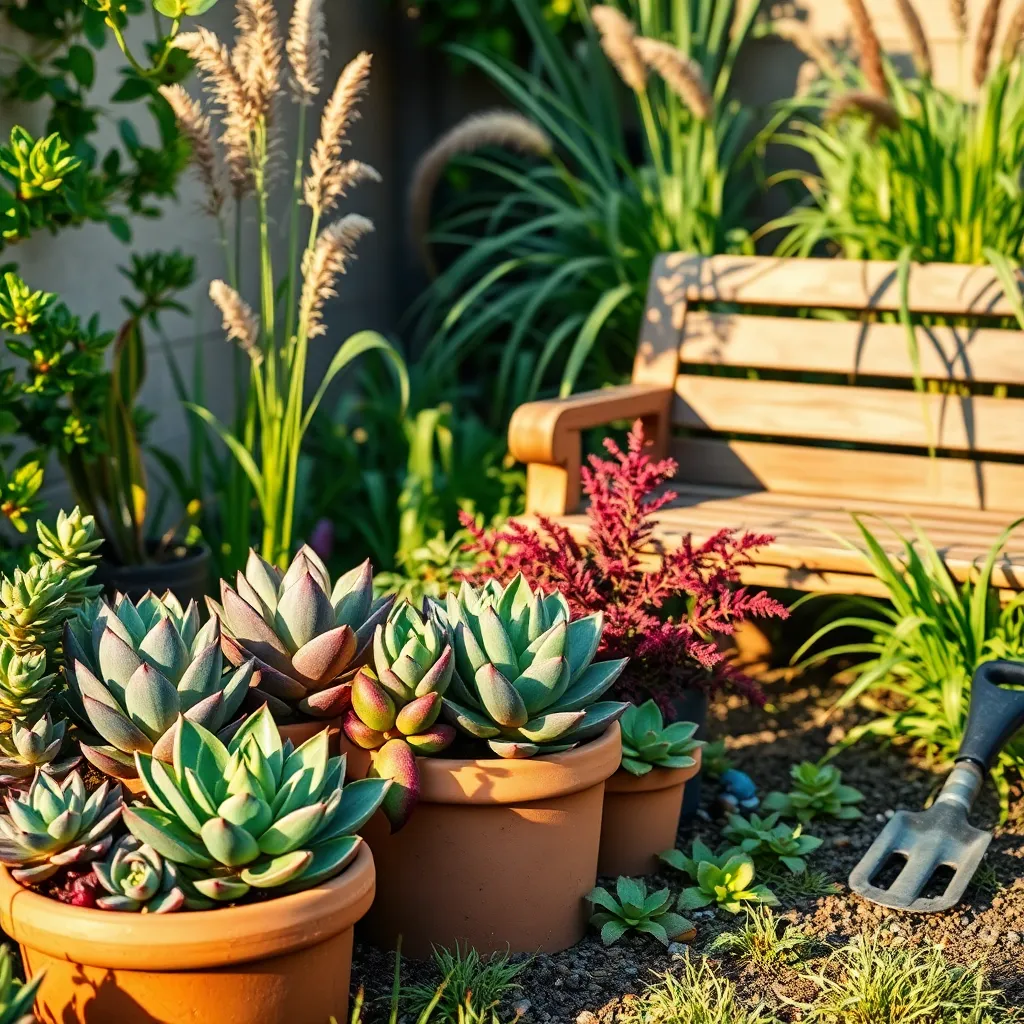
Consider using succulents like Aloe Vera or Sedum if you’re looking for low-maintenance plants. These hardy plants thrive in well-drained soil and require minimal watering, making them ideal for busy schedules.
Bamboo is another excellent choice for those who desire a lush look with little effort. It grows rapidly and needs only occasional watering once established, especially if planted in nutrient-rich soil.
For a burst of color, try planting perennial flowers such as Coneflowers or Daylilies. These plants are not only drought-tolerant but also self-propagate, meaning they will return year after year with minimal intervention.
Don’t overlook the versatility of ornamental grasses like Fountain Grass or Blue Fescue. They are resilient to various climates and require only seasonal trimming to maintain their shape and appearance.
Utilize Self-Watering Planters
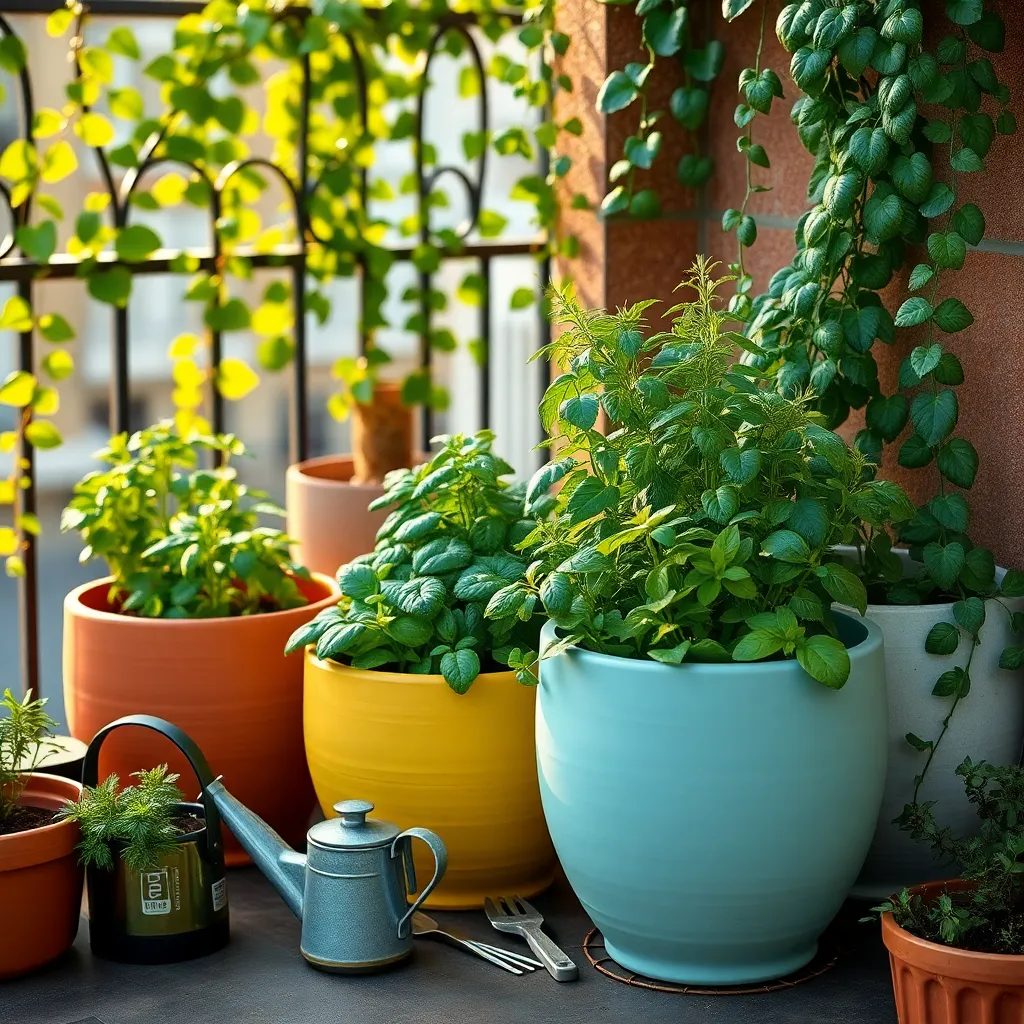
Self-watering planters can be a game-changer for busy gardeners who want to ensure their plants stay hydrated without constant attention. These planters typically have a reservoir at the bottom, allowing plants to draw up water as needed, which reduces the frequency of watering and helps prevent over- or under-watering.
To use a self-watering planter effectively, start by choosing a high-quality potting mix that facilitates excellent drainage and moisture retention. A mix that contains materials like perlite or vermiculite can help maintain the right balance of air and water, ensuring your plants’ roots stay healthy and well-aerated.
When setting up your self-watering planter, make sure the water reservoir is filled according to the manufacturer’s instructions. Monitor the water level regularly, especially during hot weather, to ensure your plants have consistent access to moisture, which is crucial for their growth and vitality.
Advanced gardeners can experiment with using self-watering planters for a variety of plants, including herbs, vegetables, and even some flowering species. For those who travel frequently or have a hectic schedule, these planters can provide peace of mind, knowing that their plants will remain healthy and vibrant with minimal intervention.
Incorporate Slow-Release Fertilizers
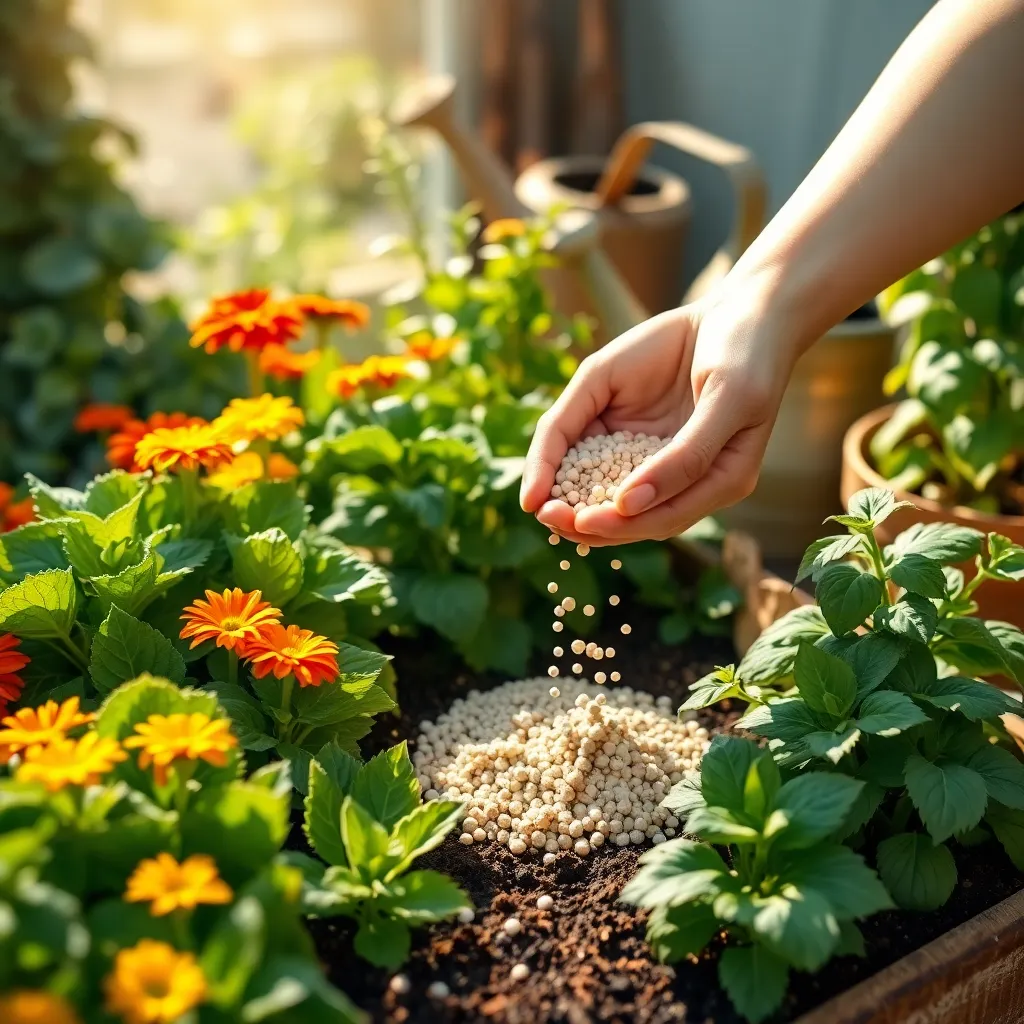
For busy gardeners, slow-release fertilizers are a game-changer, providing nutrients over an extended period with minimal effort. These fertilizers gradually break down and release nutrients into the soil, ensuring your plants are fed consistently without frequent applications.
To use slow-release fertilizers effectively, mix them into the top layer of soil at planting time or apply them to established plants in early spring. This method works well for a variety of plants, from blooming perennials to vegetable crops, providing essential nutrients throughout the growing season.
When choosing a slow-release fertilizer, look for products with a balanced ratio of nitrogen, phosphorus, and potassium, such as a 10-10-10 formula. This balance supports overall plant health, promoting strong roots, vibrant flowers, and abundant fruit production.
For those with more experience, consider selecting a fertilizer tailored to specific plants, like one higher in phosphorus for flowering varieties. Always follow the package instructions for application rates to avoid over-fertilizing, which can harm plants and soil health.
Schedule Automated Irrigation Systems

Automating your irrigation system can be a game-changer for busy gardeners, ensuring plants receive the moisture they need without constant manual intervention. To set up an effective automated system, first assess the specific water requirements of your garden, considering both the types of plants and the local climate.
Once you have a clear understanding of your garden’s needs, invest in a reliable irrigation controller that allows you to program watering schedules. Look for models that offer features like soil moisture sensors or weather-based adjustments, enabling more precise control over watering times and preventing over-irrigation.
Begin by grouping plants with similar water needs together to optimize your irrigation system’s efficiency. This strategy not only conserves water but also ensures that each plant receives the appropriate amount without unnecessary waste.
For a more advanced setup, consider integrating a smart irrigation system that can be controlled via a smartphone app. These systems often provide real-time updates and adjustments based on weather forecasts, making it easier to adapt to changing conditions without manual intervention.
Implement Mulching to Reduce Weeds
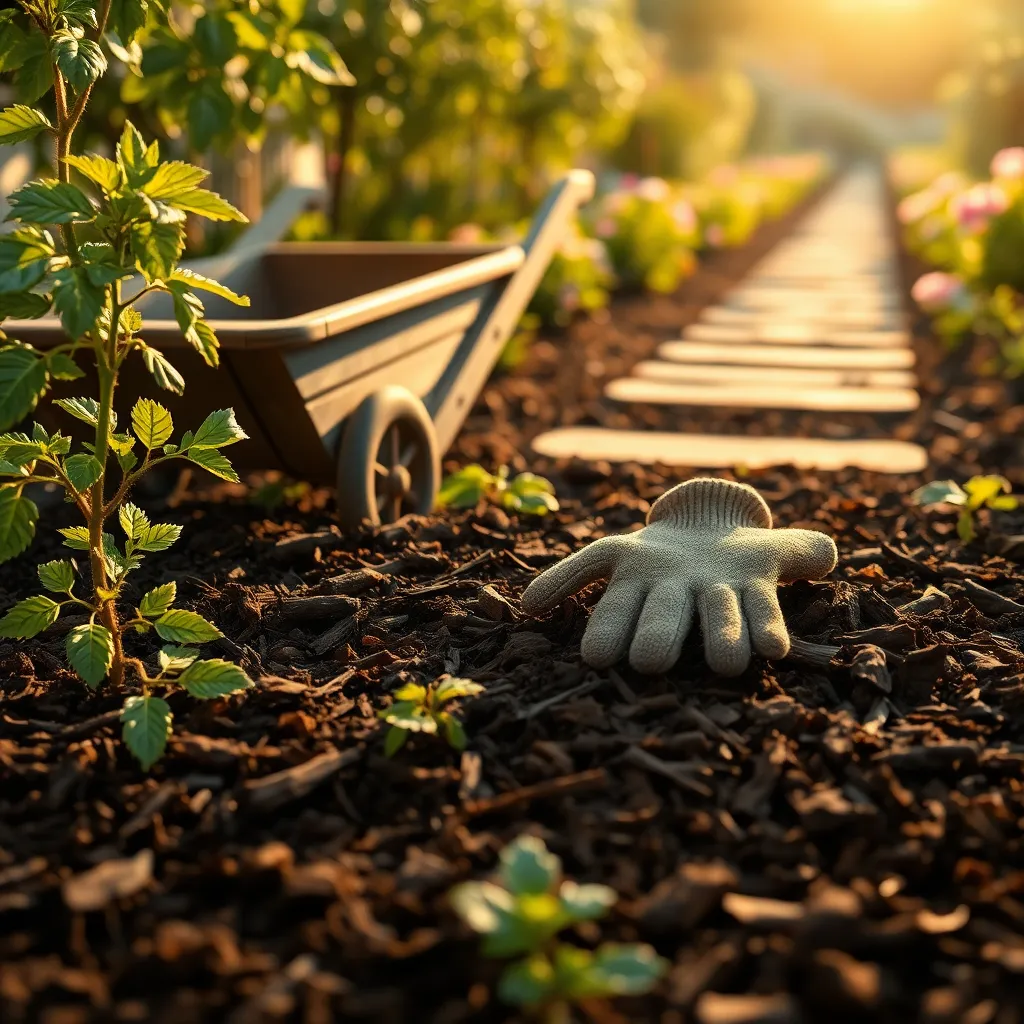
Mulching is a fantastic way to reduce weeds and conserve moisture, making it perfect for busy gardeners. By covering your garden beds with a layer of mulch, you can significantly decrease the time spent on weeding.
Begin by choosing the right type of mulch for your garden, such as organic options like wood chips, straw, or shredded leaves. These materials not only suppress weeds but also enrich the soil as they break down, providing nutrients to your plants.
For best results, apply a layer of mulch about 2 to 3 inches thick around your plants, ensuring it doesn’t touch the stems to prevent rot. This thickness is optimal for blocking sunlight from reaching weed seeds, thus inhibiting their growth.
As a more advanced tip, consider using landscape fabric beneath the mulch for extra weed control. This technique can be especially beneficial in perennial beds or areas with persistent weed problems, as it adds an additional barrier against unwanted growth.
Conclusion: Growing Success with These Plants
In “Gardening Tips for Busy People,” we explored five essential relationship nurturing concepts that can transform your connection with loved ones. First, prioritizing quality time ensures you’re watering the relationship seeds even in a packed schedule. Second, effective communication acts as the sunlight that fosters growth, illuminating misunderstandings. Third, setting healthy boundaries ensures a balanced ecosystem where both partners thrive. Fourth, practicing gratitude is akin to fertilizing your garden, enhancing positivity and resilience. Lastly, embracing adaptability allows your relationship to weather any storm, much like a flexible plant swaying in the wind.
As a next step, choose one concept to focus on this week—perhaps start with a gratitude journal or schedule an uninterrupted hour with your partner. By taking immediate action, you begin cultivating a flourishing relationship garden. Remember, the path to relationship success is an ongoing journey requiring intentional effort and care.
Bookmark this article now to revisit these nurturing principles when you need a reminder or a boost. As you sow these seeds of thoughtful connection, envision the vibrant, loving relationship that awaits. Your commitment today lays the foundation for a thriving partnership tomorrow.

